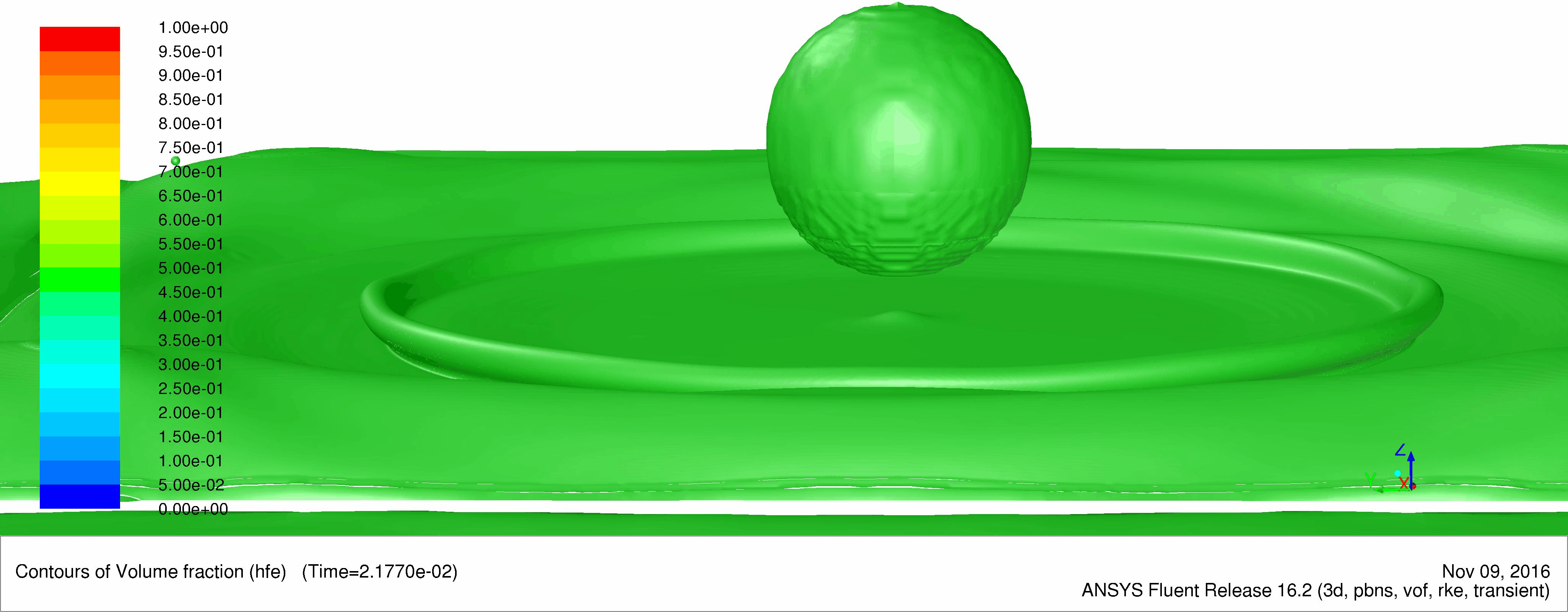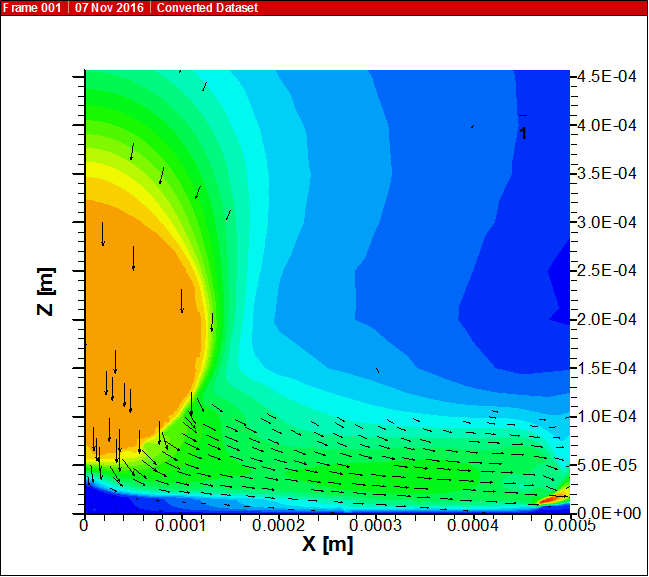Nanofluids are dilute colloidal system in which nano-sized particles (5-100nm) are dispersed in a basefluid. The interest in nanofluid in heat transfer community was instigated mainly due to anomalous enhancement of thermal conductivity reported in most publications in this field. However, some studies argued that thermal conductivity of nanofluids follows that of the effective medium theory for suspensions and any enhancement beyond the theoretical predictions were potentially caused by the anomalies in the measurement techniques that were used. Efforts are taken at MSTF laboratory to have a detailed investigation on the heat transfer performances of nanofluids from industrial to microscopic level to better understand probable reasons behind the reported anomalous enhancement. Nanofluids are prepared in our laboratory following a top-down approach. Appropriate amounts of nanoparticles (SiO2 Alumina, carbon nano tubes) are dispersed in the basefluid (water, silicon oil, GTL, Jet fuel, drilling fluid) using an ultrasonic bath for one hour.
Study of nanofluids
Heat transfer performance of nanofluids in industrial heat exchangers
Thermal performances of nanofluids in industrial type heat exchangers were investigated using experimental flow loop developed. Experiments are conducted to compare the overall heat transfer coefficient and pressure drop of water vs. nanofluids in laboratory-scale plate and shell-and-tube heat exchangers. Experimental results show both augmentation and deterioration of heat transfer coefficient for nanofluids depending on the flow rate and nanofluid concentration through the heat exchangers. A maximum enhancement of 5% in total heat transfer coefficient is observed for 5% weight ratio of SiO2-water nanofluid, however, the pressure drop for the same nanofluid is observed to have increased by 18%. This trend could be explained by the counter effect of the changes in thermo-physical properties of fluids together with the fouling on the contact surfaces in the heat exchangers. The measured pressure drop while using nanofluids show an increase when compared to that of basefluid which could limit the use of nanofluids in industrial applications.
Selected Publication: Anoop. K, Cox J. and Sadr R., "Thermal Evaluation if Nanofluids in Heat Exchangers", International Communications in Heat and Mass Transfer, 49, 5-9, 2013.
Heat Convection in a microchannel using nanofluids
The microchannel (Width × Length × Height: 8 mm × 12 mm × 100 μm) used in the experiment was fabricated from PDMS (Poly Di-Methyl Siloxane) using soft lithography techniques. The experimental results show that heat transfer increases with flow rate for both water and nanofluid samples. However, for the nanofluid samples - heat transfer enhancements occur at lower flow rates and heat transfer degradation occurs at higher flow rates (compared to that of water). Electron microscopy of the heat-exchanging surface revealed that surface modification of the microchannel flow surface occurred due to nanoparticle precipitation from the nanofluid .The fouling of the microchannels by the nanofluid samples is believed to be responsible for the progressive degradation in the thermal performance, especially at higher flow rates.
Select publication:Anoop, K., Sadr, R., Yu, J., Kang, S., Jeon S. and Banerjee, D., "Experimental Study of Forced Convective Heat Transfer on Nanofluids in a Microchannel," International Communications in Heat and Mass Transfer, 39: 1325-1330, 2012.
Near-wall nPIV measurements of nanofluids
MSTF laboratory, Texas A&M University at Qatar houses one of the unique flow visualization facility, nano-PIV or popularly known as n-PIV, which can quantify particle motion very close to the walls (less than 300 nanometers) where the flow occurs. This kind of visualization is distinct from the conventional PIV (Particle image Velocimetry) technique as it uses evanescent waves generated by Total Internal Reflection (TIR) to illuminate the flow region near to the wall. Such a technique is profoundly intricate due to the state-of-the-art optics, lasers and high speed imaging techniques involved. In our laboratory, we have developed a facility that is even capable of measuring the Brownian motion of nanoparticles with very little inaccuracies. Such experimental visualizations are believed to substantially aid in understanding the fundamental aspects involved in transport process at micro/nano-scale. In our experimental studies, we have determined the average fluid velocities of nanofluids at three near-wall regions of different thicknesses. Variations in the optical properties of the suspension had little effect on the measurement technique. The nPIV measurements indicate that the fluid velocities of nanofluids are slightly higher than those of the basefluid in the wall region. This might be associated with particle migration caused by fluid shear in the wall region.
Select publication:Anoop, K. and Sadr, R., "nPIV Velocity Measurement of Nanofluids in the Near-Wall Region of a Microchannel", Nanoscale Research Letters, 7: 284, 2012.
There has been a growing trend in energy generation and consumption in industrial systems in the last century. Power density of engineering systems has increased significantly as a result of miniaturization in a variety of fields. This has led to the development and design of better cooling methods for these systems. Phase change cooling methodologies such as spray cooling are among the best ways to manage heat transfer in high thermal loads applications. However, the physical mechanisms of spray cooling are still insufficiently understood due to the vast number of variables involved in its hydrodynamics. The objectives of this work are to investigate the effects of droplet physical parameters such as droplet size and frequency on Kevin-Helmholtz instability suppression and convective heat transfer enhancement on the surface by inducing fine-tuned capillary waves through periodic droplet impingement.
Select publications:
- Muthusamy, JP. Zhang, T, Alvarado J, Anoop K, Sadr, R;., Effects of High Frequency Droplet Train Impingement on Crown Propagation Dynamics and Heat Transfer, Journal of Heat Transfer, 138 (2) pp.020903, 2016
- Zhang,T, Muthusamy JP, Alvarado JL, Anoop K, Sadr, R, Numerical and experimental investigations of crown propagation dynamics induced by droplet train impingement, International Journal of Heat and Fluid Flow, 57, 24-33, 2016.
- Zhang,T, , Alvarado JL, Muthusamy JP Anoop K, Sadr, R, Effects of High Frequency Droplet Train Impingement on Spreading-Splashing Transition, Film Hydrodynamics and Heat Transfer, Journal of Heat Transfer, 138 (2) pp.020902, 2016.
- Zhang,T, , Alvarado JL, Muthusamy JP Anoop K, Sadr, R, Effects of screen laminates on droplet-induced film hydrodynamics and surface heat transfer, Journal of Heat Transfer, 138 (8) pp.080902, 2016.
- Zhang,T, Muthusamy JP, Alvarado JL, Anoop K, Sadr, R, Experimental and Numerical Visualization of Droplet Induced Crown Splashing Dynamics, Journal of Heat transfer 139/020909, 2017.

